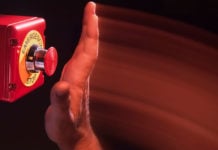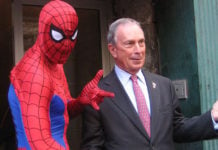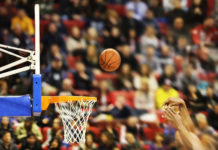I’ve been a baseball fan since before I could spell “bat.” I test my wife’s patience with St. Louis Cardinals news, carry fond memories of years coaching kids and never go to a game without filling out a scorecard. But the love affair is not what it used to be.
It’s not that I want to give up baseball. It’s that baseball keeps pushing me away. Recently, when my eldest stepson and I went to see the Texas Rangers play the Milwaukee Brewers in Miller Park, we endured everything that has made a joyless slog of the modern game.
Despite ending after nine innings, it took more than four hours. It featured 18 walks, two batters hit by pitches and 19 strikeouts. That’s 39 times a highly skilled, well-muscled athlete strode to the plate with an implement designed for hitting a ball and made no productive use of it.
Figure, conservatively, that those plate appearances averaged three minutes apiece. That’s nearly two hours that some of the world’s best fielders idled away watching a pair of teammates play catch, while they did nothing more strenuous than spitting. They could have been at the concession stand for all the difference it made.
Of the 12 hits, four left the yard. So in the course of the contest, base hits that required sprinting occurred only every half hour or so. Most of the time was spent waiting… for someone… to do… something.
I was reminded of what someone said after driving across West Texas: Until then, he had never understood the concept of infinity. Only a walk-off homer released us from the void of tedium. Not every game is that way, of course: They don’t all end in walk-offs. The void of tedium, however, has become the norm.
My waning interest, however, led me to a fetching alternative: tennis. Like baseball, it involves hitting a ball with an implement and trying to keep your opponent from doing likewise. Like baseball, it has no fixed time limit. But there the resemblance ends.
For a baseball fan, the sight of athletes constantly hitting and running around takes some getting used to. Unlike batters, tennis players don’t usually whiff when they swing, and they have no incentive to stand still watching the ball go by. Points are played with brisk regularity, and a single rally can provide more excitement than three innings of baseball. The few interruptions in play are usually brief.
Nowadays, the average Major League Baseball game takes just over three hours. Tennis matches don’t usually take much more than two, and some wrap up in an hour. (The exception arises in major tournaments, where the men play best of five sets, instead of three, and battles can drag on like the siege of Stalingrad.)
If you go to a tournament, you’ll discover other merits. Last week, at the Western and Southern Open outside Cincinnati, one of the main stops on the professional tour, my wife and I found that you can see half a dozen full matches in a day. If one is dull, you can take a short walk to find another one.
Nor do you have to worry about bad seats. The biggest of American tennis arenas, Arthur Ashe Stadium in New York, holds 23,771 fans, and most can accommodate no more than 15,000 or so. The typical MLB park, by contrast, has room for more than 40,000.
At the stadium where the W&S was played, our tickets were among the cheapest in the 11,400-seat house. But they put us closer to the action than the loge infield box seats I got in Milwaukee.
But at the outer courts, where most matches take place, there are seats for only a couple of thousand fans, at most. You’re so close to the players that you feel like you’re invading their privacy. A bonus: If you miss seeing a player in a match, you can probably find him or her on a practice court, with an audience numbered in single digits.
Now, as it happens, is a great time for tennis. Some of the best players ever – Serena Williams, Venus Williams, Roger Federer and Rafael Nadal – are still competing and even winning. But there is no shortage of talented youngsters who upstage them anytime.
I’m not ready to abandon baseball just yet. But for me right now, to use terms Federer would understand, tennis is up a set.





























